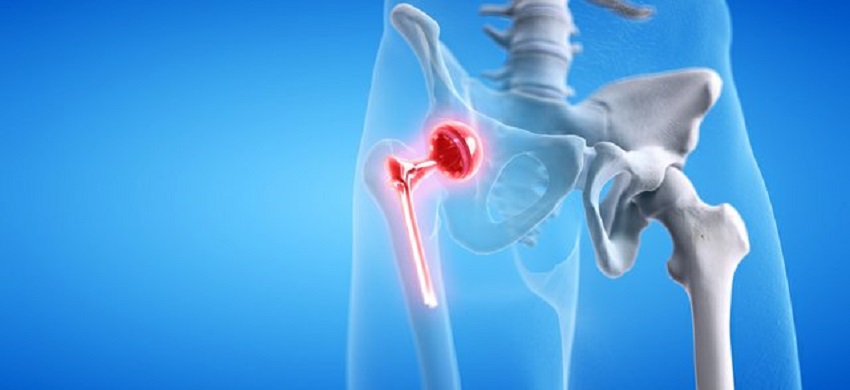
Materials employed in Orthopedic implants manufacturers may play a crucial role within the fixation process. The fabric of the implant influences its rigidity, corrosion, biocompatibility, and tissue receptivity, while the surface morphology influences its stability within the skeleton or the encircling cement mantle.
What is the most effective material for orthopedic implants?
The following characteristics can be wont to describe the perfect orthopedic implant material:
- Inert chemically;
- Biocompatible;
- Great fortitude;
- High resistance to fatigue;
- Elastic modulus is low.
- Corrosion-proof;
- Excellent wear resistance;
To get closer to the present description, orthopedic implant manufacturers constantly invest in R&D to boost existing materials and explore new ones. The hunt is on.
Did you recognize that Orthopedic implants manufacturers automatically recommend the implant that’s best suited to the orthopedic surgical procedure that an orthopedic surgeon has planned?
Materials needed to make implants
- Metals, polymers, and ceramics are currently utilized in prosthetic devices.
- Metallurgical grade chrome steel (commonly 316L), cobalt-chromium (Co-Cr) alloys, and pure commercial titanium (Ti) or titanium alloys are among the metals employed in orthopedic implants.
- Because of its low fatigue strength and propensity to plastic deformation, stainless steel is employed for non-permanent implants like internal fixation devices.
- Before utilizing titanium, cobalt-based alloys largely replaced stainless steel as materials for permanent implants, forming a durable chromium oxide surface layer.
- Orthopedic implants manufacturers using Titanium includes pure commercial titanium further as titanium alloys like Ti-6Al-4V. These metals are shown to be extremely biocompatible.
Materials utilized in the manufacture implants.
Metals
- Stainless steel is employed for non-permanent implants like internal fixation devices because of its low fatigue strength and propensity to plastic deformation.
- Before utilizing titanium, cobalt-based alloys had largely replaced chrome steel as materials for permanent implants. These alloys are generally more corrosion resistant, forming a durable chromium oxide surface layer.
- Titanium utilized in Orthopedic implants manufacturers includes pure commercial titanium still as titanium alloys like Ti-6Al-4V. These metals are shown to be extremely biocompatible. Nonetheless, there is some concern about the impact of vanadium and aluminum. Thanks to the formation of titanium dioxide on the surface, titanium and its alloys are more corrosion resistant than Co-Cr alloys.
On the opposite hand, this layer could also be porous and brittle. Abrasion of this titanium dioxide layer may result in particle release into the encompassing tissues.
Polymers
- Polymers are forme by chemically linking an outsized number of monomers. The monomer in inorganic polymers is an organic molecule with a central atom.
- In orthopedics, the foremost commonly used polymer is ultra-high-molecular-weight polyethylene (UHMWP) or high-density polyethylene (HDPE) (HDP). Polyethylene has thus far proven to be the simplest material for articulating with metal or ceramic.
- One major issue with polymers is the slow, temperature-dependent deformation they experience under load, often mentioned as “creep.” The progressive wear of polyethylene is another source of concern.
- Carbon fiber was accustome strengthen the mechanical strength of polyethylene. Although creep and durability may be increase, surface wear resistance was reduce.
- Despite the increasing use of cement-free devices, self-curing bone cement, an acrylic polymer, continues to be widely use. Modern cementing techniques are in charge of the significantly improve clinical outcomes of cemented prosthetic implants.
- It should be note. However, that cement does not function as a glue but rather as a filler that permits mechanical anchoring of the implant and cargo transfer from the prosthesis to the bone.
- Polymethylmethacrylate (PMMA) has nearly all mechanical properties inferior to cortical bone. Its low modulus of elasticity appears to be a bonus, with a gradual stress transfer to the bone.
Ceramics
- Aluminum oxide and calcium phosphates are two ceramics commonly utilize in orthopedic implants. These ceramic materials Orthopedic implants manufacturers are very compressible but brittle and weak under tension and shear.
- Aluminum oxide (Alumina) ceramics are create by applying pressure and temperature to a powder at an identical time. This method, referred to as hot-pressing, ends up in a product with high density, small grain size, and good mechanical properties.
- Ceramics have a high modulus (330.000 MPa) compared to the bone. The high noncompliant elasticity coefficient could lead to bone fracture or early loosening of ceramic acetabular sockets.
- Although in vitro tests reveale excellent tribology and wear results for the alumina-to-alumina and socket combination, unacceptable wear has been observe after several years of clinical use. Another excuse for its discontinuation is that the ceramic’s low resilience. This property may hurt the initiation and propagation of impact cracks.
Ceramic to HDP is articulating surfaces are use instead.
Because of their high biocompatibility and reactivity, inorganic phosphate ceramics are particularly appealing as implant coatings. Several methods are accustome to coat titanium and titanium alloys with hydroxyapatite (HA). These inorganic phosphate implant coatings lead to early porous implant fixation and bone ingrowth.
Other ceramic materials, like oxide (Zirconia) and silicon dioxide, are commonly use (Silica).
- Chrome Cobalt
- In orthopedic surgery, cobalt chrome has become a well-liked bearing surface. Due to this, cobalt chrome has become the foremost commonly used material in arthroplasty.
Common Applications
Cobalt chrome is now a common bearing surface in orthopedic surgery. It is a popular bearing surface in metal-on-polyethylene (plastic) bearing applications. Cobalt chrome was a popular bearing surface during metal’s rise and subsequent fall on metal total hip arthroplasty. Some cerclage wires are also make from a more ductile cobalt chrome alloy.
Conclusion
While the issue is still debate, many practitioners will avoid cobalt chrome in arthroplasty patients with severe nickel allergies. This distinction between orthopedic implant manufacturers is documente in the literature for total knee and hip replacements.
